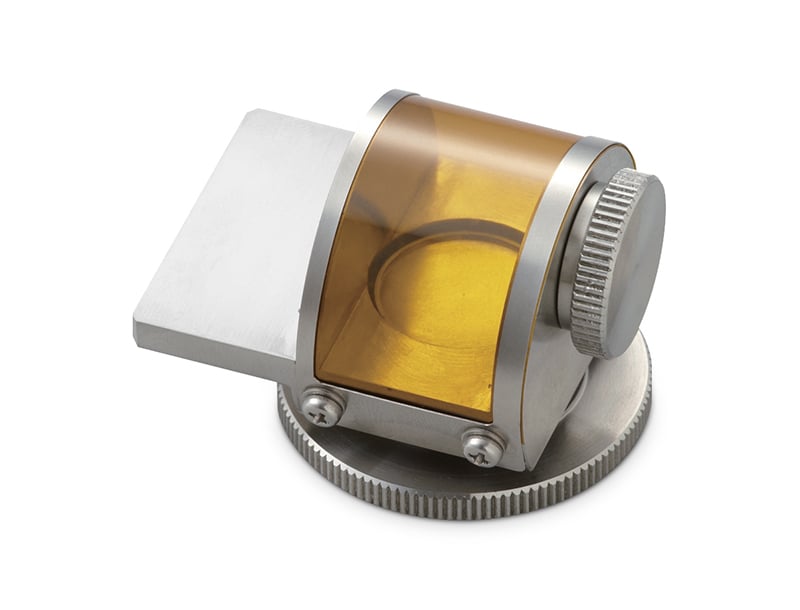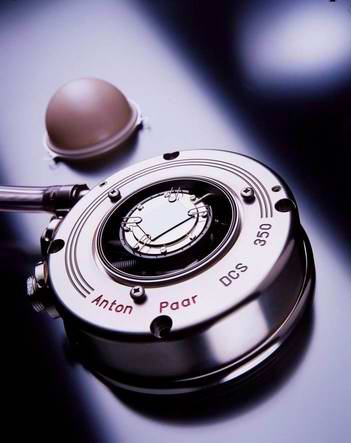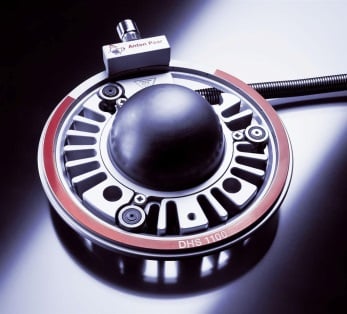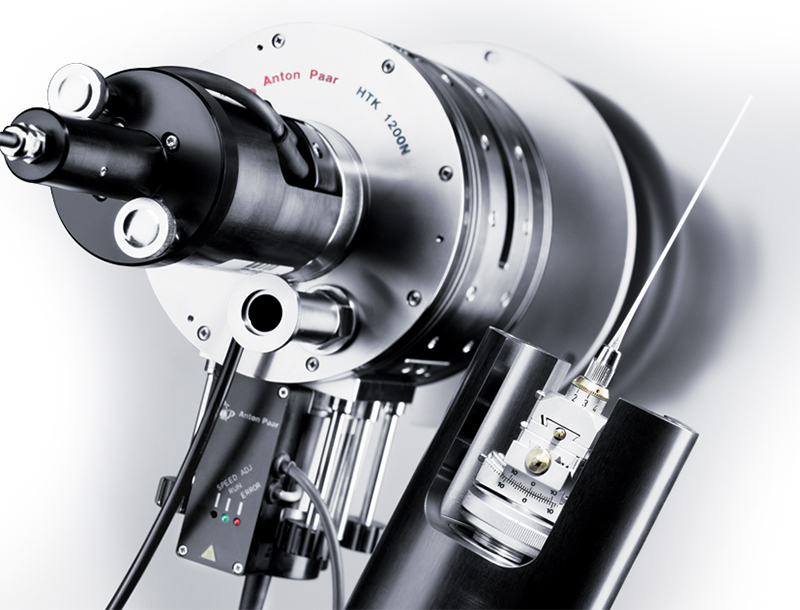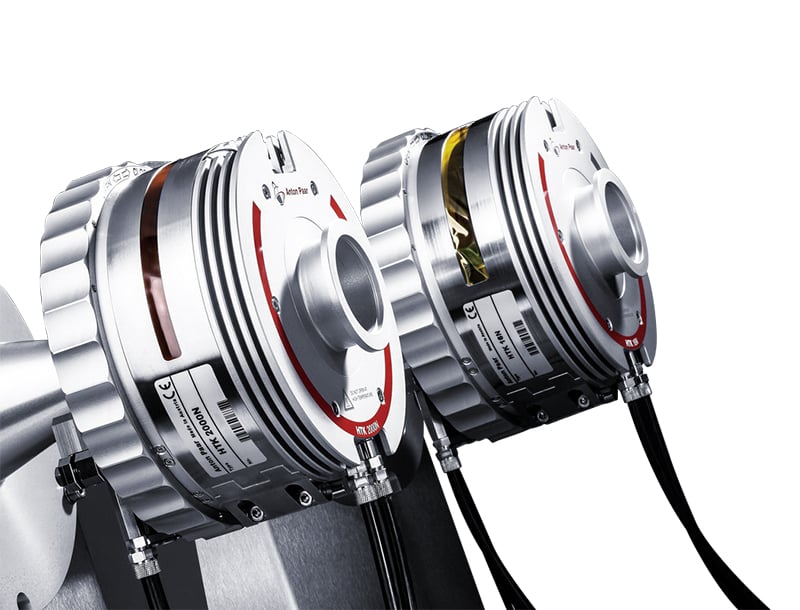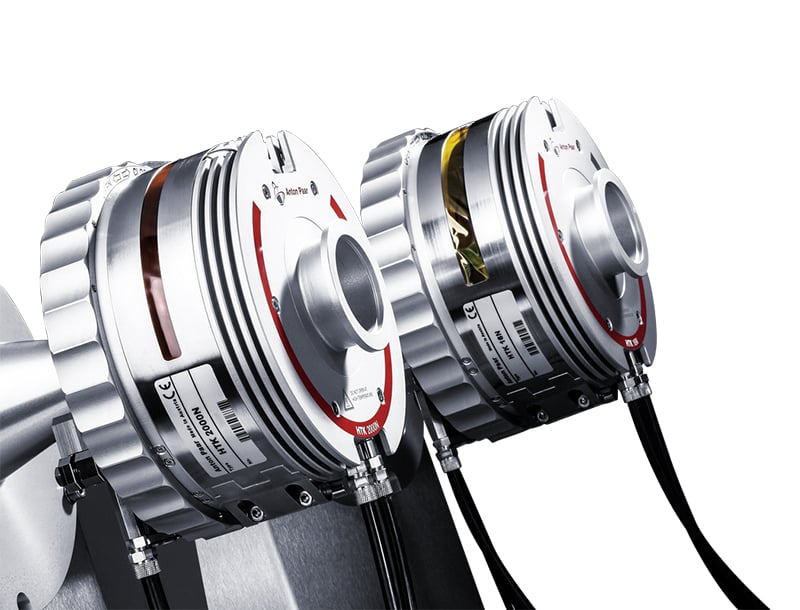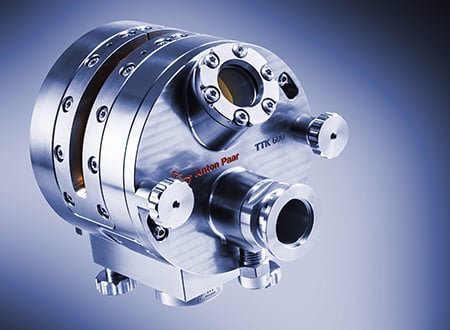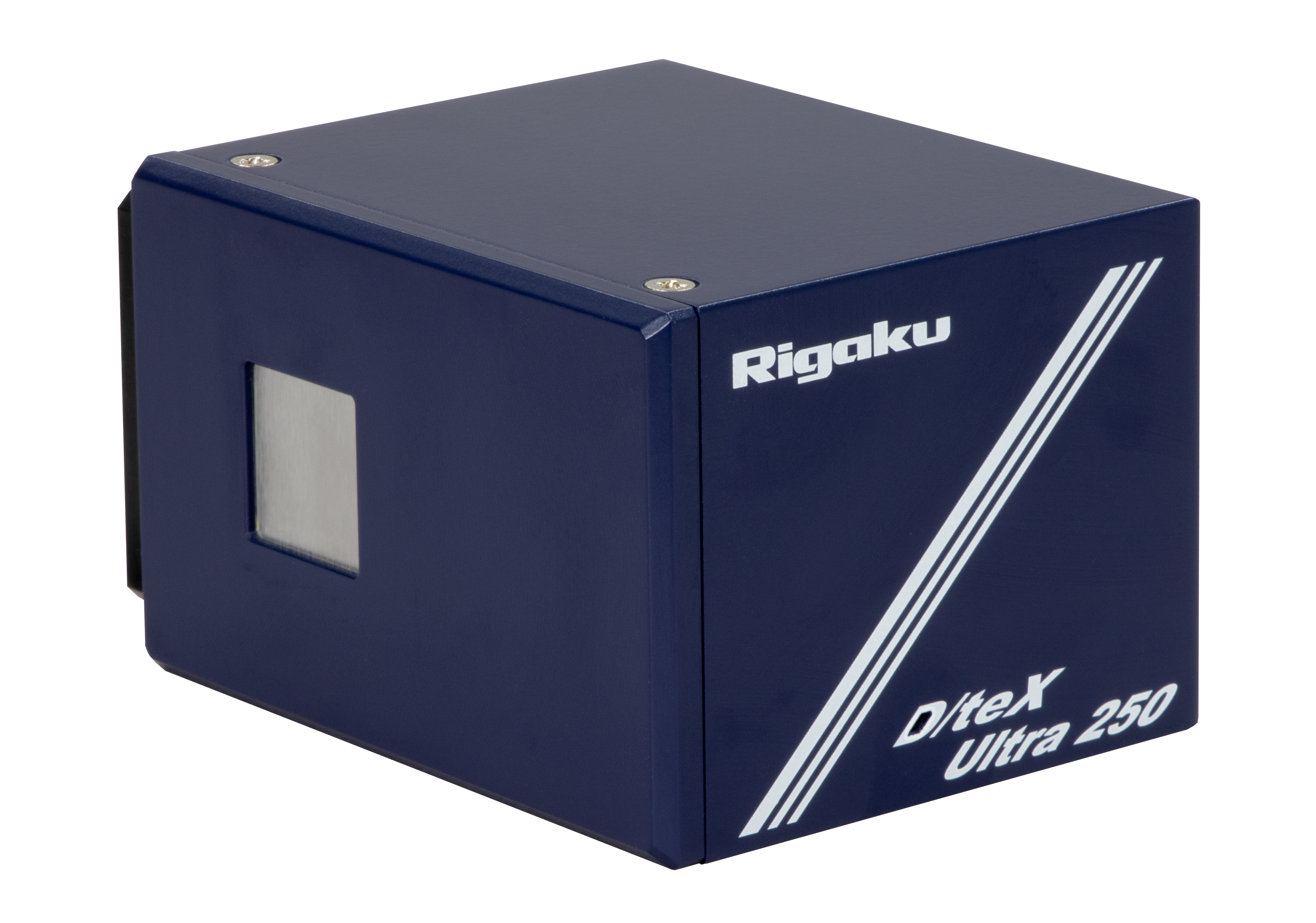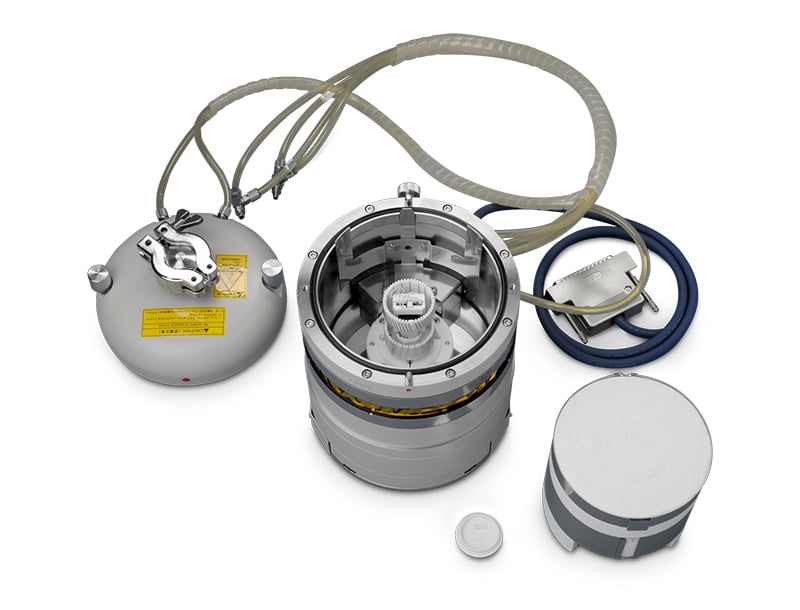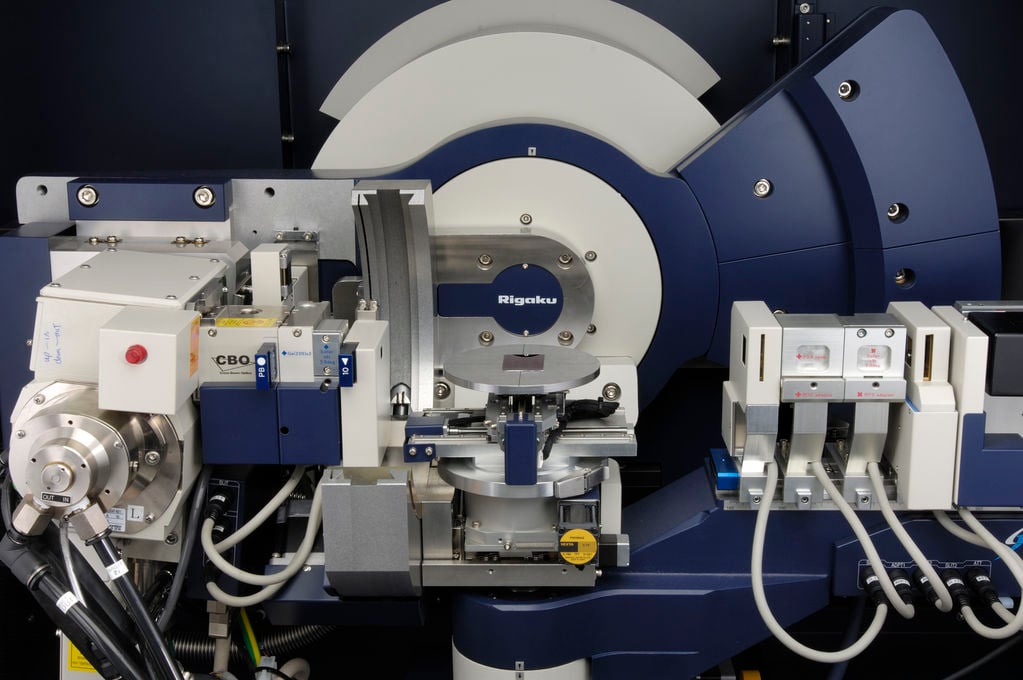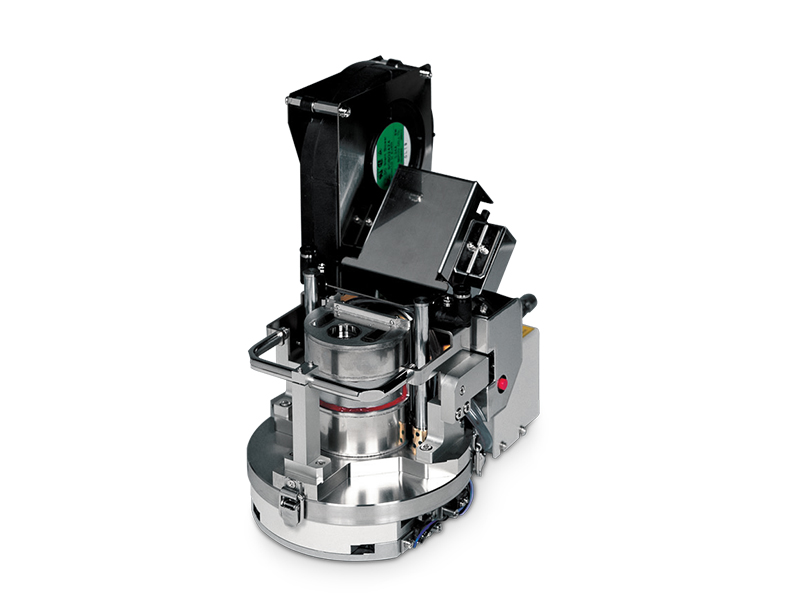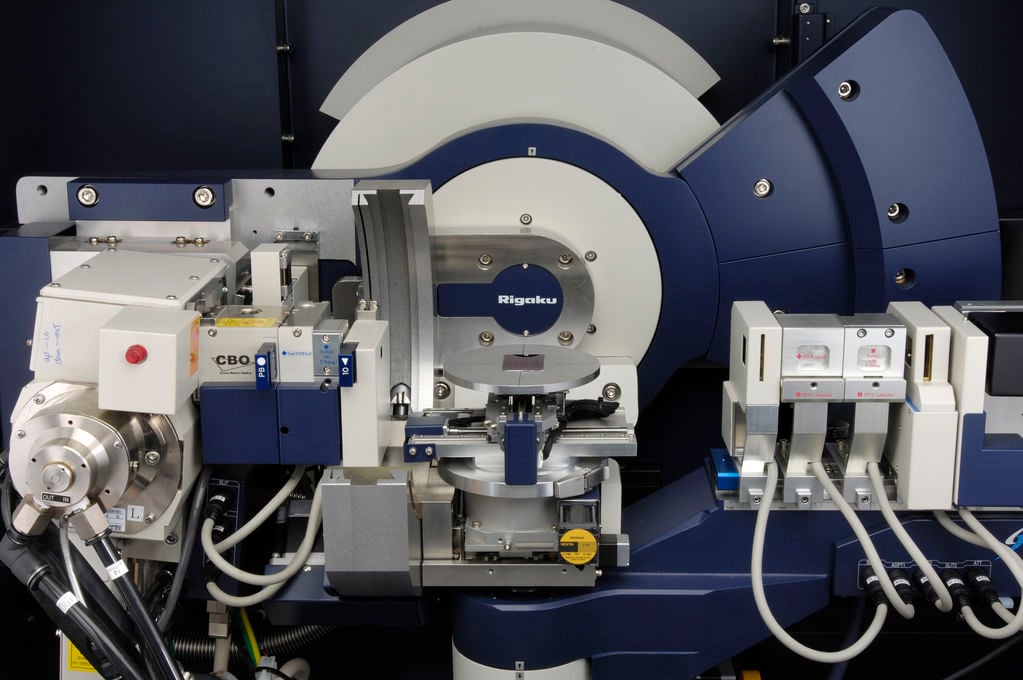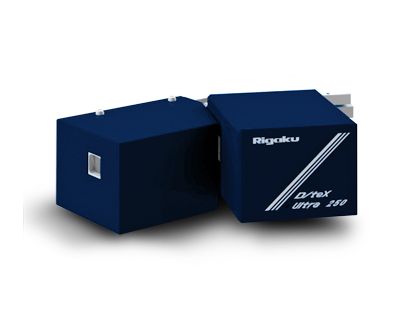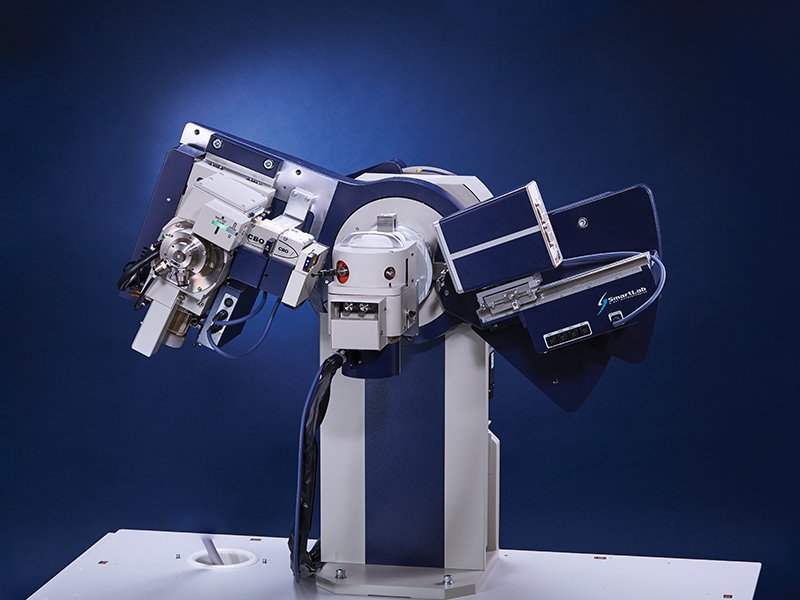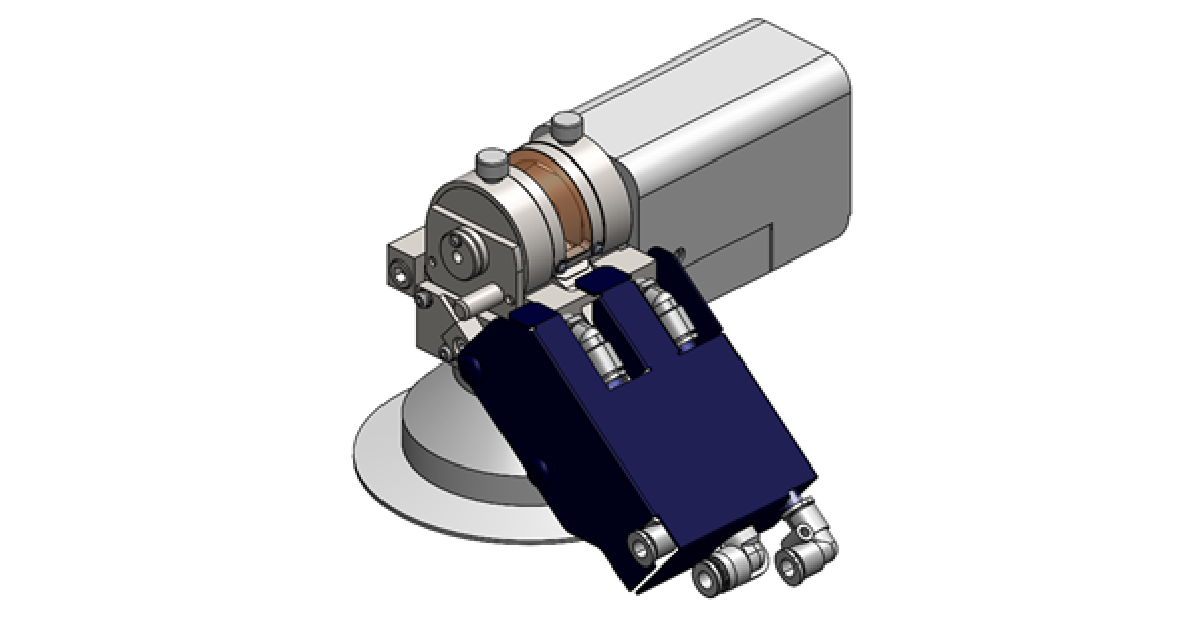SmartLab
Automated Multipurpose X‑ray Diffractometer (XRD) With Guidance Software
Powder diffraction, thin film metrology, SAXS, in-plane scattering, operando measurements
Rigaku SmartLab is the newest and most novel high-resolution X-ray diffractometer (XRD) available today. Perhaps its most novel feature is the new SmartLab Studio II software, which provides the user with an intelligent User Guidance expert system functionality that guides the operator through the intricacies of each experiment. It is like having an expert standing by your side.



SmartLab Overview
This new X-ray diffraction system features the PhotonMax high-flux 9 kW rotating anode X-ray source coupled with a HyPix-3000 high-energy-resolution 2D multidimensional semiconductor detector that supports 0D, 1D and 2D measurement modes, allowing all applications to be handled with a single detector, eliminating the inconvenience of preparing and switching individual detectors for different applications. The HyPix-3000 detector can be used to obtain 2D powder diffraction patterns, which can be processed to deliver superior qualitative analysis by using all the 2D pattern information. The system incorporates a high-resolution θ/θ closed loop goniometer drive system with an available in-plane diffraction arm. The system’s new Cross-Beam-Optics (CBO) family feature fully automated switchable reflection and transmission optics (CBO-Auto).
XRD designed for usability
Coupling a computer controlled alignment system with a fully automated optical system, and the User Guidance functionality within the SmartLab Studio II software, makes it easy to switch between hardware modes, ensuring that your hardware complexity is never holding back your research.
XRD that is functionality redefined
Whether you are working with thin films, nanomaterials, powders, or liquids the SmartLab will give you the XRD functionality to make the measurements you want to make when you want to make them. The equipment accepts powder, liquid, films, and even textile samples and allows mapping measurements within suitable samples. Operando (a.k.a., real time in-situ) measurements can be performed with the new Rigaku SmartLab Studio II software suite, which is an integrated software platform incorporating all functions from measurement to analysis. The system also features robust security and validation protocols to ensure that any technology component - software or hardware - fulfills its purpose within regulatory guidelines, including 21 CFR Part 11, establishing the US EDA regulations governing electronic records and electronic signatures (ER/ES).
SmartLab Features
High-resolution micro area CBO-μ
SmartLab Videos
SmartLab Specifications
| Technique | X-ray diffraction (XRD) | |
|---|---|---|
| Benefit | Powder diffraction, thin film, SAXS, in-plane scattering, operando measurements | |
| Technology | Automated high-resolution θ-θ multipurpose X-ray diffractometer (XRD) with expert system Guidance software | |
| Attributes | 3 kW sealed X-ray tube CBO optics D/teX Ultra 250 silicon strip detector |
|
| Options | PhotonMax high-flux 9 kW rotating anode X-ray source In-plane arm (5-axis goniometer) HyPix-3000 high energy resolution 2D HPAD detector Johansson Kα₁ optics |
|
| Computer | External PC, MS Windows OS, SmartLab Studio II software | |
| Dimensions | 1300 (W) x 1880 (H) x 1300 (D) mm | |
| Mass | Approx. 750 kg (sealed tube) 850 kg (rotating anode) |
|
| Power requirements | 1Ø, 200-230 V 50/60 Hz, 40 A or 3Ø, 200 V 50/60 Hz, 30 A (sealed tube) 3Ø, 200 V 50/60 Hz, 60 A (rotating anode) |
|
SmartLab Options
The following accessories are available for this product:
SmartLab Application Notes
The following application notes are relevant to this product
-
XRD2001 - Orientation and Residual Stress Evaluation in Metal Thin Films
-
BATT1018 - XRD Measurement with Temperature Control and Charge/Discharge Using Laminated Cells
-
BATT1017 - XRD Measurement during Charge/Discharge Using All-Solid-State Batteries
-
BATT1016 - XRD Measurement During Charge/Discharge Using Laminated Cell Batteries
-
BATT1015 - Local Structure Analysis of Li₃PS₄ Solid-State Electrolyte
-
BATT1012 - Inference of Valence and Li Ion Diffusion Path Using the BVS Method
-
BATT1011 - Measurement of Cathode Material NCM Using XSPA-400 ER High-Energy Resolution Detector
-
BATT1010 - Investigation of Phase Transition Behavior upon Cathode Material NCM Firing
-
PHRM0002 - In-Situ DSC-Humidity PXRD Analysis for Pharmaceuticals
-
BATT0003 - Battery Performance
-
BATT0002 - Battery Material Characterization
-
BATT0001 - Battery Material Development
-
B-XRD1143 - Verifying the Validity of Crystallite Sizes Determined by the FP Method
-
B-XRD1129 - Variable Humidity Measurement of a Drug Substance using XRD-DSC and a Humidity Controller
-
B-XRD2034 - Twist Width Evaluation of Group III-V Nitride Films by Rocking Curve Measurement
-
B-XRD1109 - Structure Determination of Ferroelectric Nano-powder by PDF Analysis
-
B-XRD1131 - Structural Characterization of Zeolite by PDF Analysis
-
B-XRD1136 - Structural Characterization of Zeolite by Electron Density Analysis
-
B-XRD1112 - Structural Analysis of Amorphous Silica by PDF Analysis
-
B-XRD1123 - Simultaneous Operando XRD Measurement for Positive and Negative Electrode Materials
-
B-XRD1080 - Rietveld Analysis of Battery Material using a Mo Source
-
B-XRD1118 - Quick Pole Figure Measurement of a Metal Material using 2DD
-
B-XRD1119 - Quantitative Characterization of Polymer film by Orientation Function
-
B-XRD1120 - Quantitative Analysis of Pharmaceutical Polymorphic Forms via the DD Method
-
B-XRD1115 - Quantitative Analysis of γ-Al₂O₃ by the DD Method
-
B-XRD1132 - Quantitative Analysis of Glass with the DD Method
-
B-XRD1142 - Quantitative Analysis of Crystal Polymorphs by the DD Method
-
B-XRD1093 - Quantitative Analysis of Amorphous Components in Cement
-
B-XRD1001 - Quantitative Analysis of a 4-component Sample
-
B-XRD1111 - Quantitative Analysis of 3-component Sample by DD method
-
B-XRD1125 - Quantification of the Taste of Salt by DD (Direct Derivation) Method
-
B-XRD1146 - Quantification of Blast Furnace Slag by Rietveld Refinement using Reference Intensity Ratio
-
B-XRD1002 - Quantification of a 4-component Sample using RIR method
-
B-XRD1043 - Powder Crystal Structure of Organic Crystals
-
B-XRD1121 - Phase Identification of Mixed Powder by Real-time Analysis
-
B-XRD2023 - Phase Identification of an Organic Thin Film by GI-WAXS Measurement with a 2D detector
-
B-XRD1103 - Phase Identification of a Coarse-grained Trace Component in a Mineral Powder using 2D XRD
-
B-XRD2020 - Phase ID and Orientation Analysis for Thin Film SOFC Material using 2DD
-
B-XRD1137 - Phase ID Analysis of Micro-impurities on the Surface of a Tablet by Micro-area XRD Measurements
-
B-XRD1021 - Phase Changes of Pharmaceuticals as a Function of Temperature and Humidity
-
B-XRD1110 - Particle Size Distribution Analysis of Ferroelectric Nanopowder by USAXS
-
B-XRD1102 - Particle Size / Distribution of Pigment Ink by USAXS
-
B-XRD1030 - Particle Diameter Distribution of Gold Nanoparticles
-
B-XRD2009 - Orientation Analysis of Organic Thin Film on Single Crystal Sub by In-plane XRD
-
B-XRD2005 - Orientation Analysis of Organic Thin Film on Rubbed Glass by In-plane XRD
-
B-XRD1124 - Operando Transmission XRD Measurement of All-solid-state Lithium-ion Battery using Ag Source
-
B-XRD1116 - Operando Measurement of Laminated Lithium-ion Battery using 2DD
-
B-XRD2028 - Off-normal Fiber Texture Analysis by Pole Figure Measurement
-
B-XRD2032 - Observation of Orientation State of Polypropylene Film Products by 2D-GI-WAXS Measurement
-
B-XRD1020 - Observation of Dehydration Process of Hydrate by XRD-DSC
-
B-XRD1128 - Observation of Dehydration Behavior of a Drug Substance using TG-DTA and XRD-DSC
-
B-XRD1026 - Observation of Crystallization Behavior of Ionic Liquids by XRD-DSC
-
B-XRD1135 - Observation of Butter Crystal by Simultaneous XRD-DSC Measurement
-
B-XRD1117 - Observation of a Phase Transition at High Temperature under Various Atmospheres
-
B-XRD1089 - Micro-area Mapping Measurement of Printed Circuit Boards
-
B-XRD1023 - Measurement of Pseudo-polymorph Impurities in Tablets
-
B-XRD1063 - Measurement of a Film Sample
-
B-XRD1107 - Material Characterization by PDF and RDF Analysis
-
B-XRD2003 - Magnetic Recording Media (FePt) by In-plane XRD
-
B-XRD1114 - LOQ of Trace Impurities in API by the DD Method
-
XRD1003 - How to Evaluate Solid Pharmaceutical Drugs (3): Confirming Hydrates
-
XRD1002 - How to Evaluate Solid Pharmaceutical Drugs (2): Confirming the Presence/absence of Amorphous Substances
-
XRD1001 - How to Evaluate Solid Pharmaceutical Drugs (1): Confirming the crystal form of an API
-
B-XRD1105 - High-speed in-situ Measurement of Melting Process of Metal
-
B-XRD1147 - High-precision Quantitative Analysis of Clinker Mineral Polymorphs by Rietveld Refinement
-
B-XRD2021 - High-speed RSM of an Epitaxial Film by 1D Detection Mode
-
B-XRD2024 - High-speed RSM of a III-nitride Epitaxial Film by 1D Detection Mode
-
B-XRD2007 - Examination for Growth Process of Organic Thin Film by In-plane XRD
-
B-XRD2030 - Evaluation of Uniformity of Thin Film Thickness by X-ray Reflectivity Mapping
-
B-XRD2027 - Evaluation of Uniformity of a Single CrystalSubstrate by Rocking Curve Measurement
-
B-XRD1122 - Evaluation of the Crystallinity of a Carious Tooth using X-ray Diffraction
-
B-XRD3005 - Evaluation of Residual Stress of Thin Films by GI-XRD and the Multiple hkl Method
-
B-XRD1113 - Evaluation of Oxidation State by the BVS Method
-
B-XRD1150 - Evaluation of Graphitization Degree of Lithium-ion Battery Carbon Anode Material by X-ray Diffractometry
-
B-XRD1104 - Evaluation of Grain Condition and Orientation of Cemented carbide using 2D XRD
-
B-XRD2031 - Evaluation of Curvature of a Single Crystal Substrate by Rocking Curve Measurement
-
B-XRD1078 - Evaluation of Crystallite Size and Pore Size distribution of Fuel Cell Materials
-
B-XRD2001 - Evaluation of Crystal Quality (Tilt and Twist Qidths) of Group-III Nitride Film by the Rocking Curve Method
-
B-XRD1149 - Evaluation of Barium Titanate Polymorphs by Rietveld Analysis
-
B-XRD1108 - Direct Observation of Melting and Crystallization of Fresh Cream
-
B-XRD1126 - Crystallization of Chocolate Observed by XRD-DSC
-
B-XRD1018 - Crystallite Size Distribution of Zinc Oxide Nanoparticles
-
B-XRD1071 - Crystallite Size Analysis of a Catalyst Material by the Scherrer Method
-
B-XRD1035 - Crystal Structure Analysis of a Powder Sample of Pharmaceutical Cocrystals by the Rietveld Method
-
B-XRD1046 - Crystal Phase Identification of Pharmaceutical Materials in the Freeze Drying Process
-
B-XRD1044 - Crystal Phase Identification of Carbide Tips by Micro-area 2D X-ray Diffraction
-
B-XRD2006 - Crystal Orientation Evaluation of Epitaxial Film and Ultrathin Buffer Layers by In-plane Reciprocal Space Mapping
-
B-XRD1014 - Crystal Orientation Analysis of Rolled Sheet Material by Pole Figure Measurement
-
B-XRD2022 - Crystal Defect Analysis by X-ray Reflection Topography
-
B-XRD1009 - Charging-discharging of Cathode Materials in Li-ion Batteries
-
B-XRD1106 - Charge/discharge Process of Li-ion Battery Positive Electrode
-
B-XRD1139 - Calculation of Molecular Stacking Spacing of Copper Phthalocyanine using PDF Analysis
-
B-XRD2025 - Analysis of Uniaxially Oriented Film by Wide-range RSM
-
B-XRD2026 - Analysis of Epitaxial Films on In-plane Anisotropic Substrates by Wide-Range RSM
-
B-XRD1141 - Accurate and Highly Precise Quantitative Analysis of Cement Samples using Rietveld Refinement
-
B-XRD1140 - Accurate and Highly Precise Quantitative Analysis of Cement Samples using Rietveld Refinement
-
B-XRD1011 - Temperature Dependence of a Lattice Constant
SmartLab Resources
Webinars
| X-ray Diffraction Measurements for Battery Research | Watch the Recording |
| Pair Distribution Function (PDF) Analysis for Everyday Battery Analysis | Watch the Recording |
| How to Run in Operando XRD Experiments | Watch the Recording |
| Total Diffraction and Amorphous Material Characterization | Watch the Recording |
| When to Use XRD and How to Set Up Experiments for Li-ion Battery Research | Watch the Recording |
| Simultaneous XRD-DSC – The sum Is Much Greater than the Parts | Watch the Recording |
| Component Analysis and Standardless Quantitative Analysis for Pharmaceutical Applications | Watch the Recording |
| In-Depth Overview of the Use of X-ray Diffraction (XRD) in the Investigation of Asbestos and Respirable Silica | Watch the Recording |
| Smartlab XRD Solution for Semiconductor Materials | Watch the Recording |
| Introduction of X-ray Analysis Solutions for Battery Materials | Watch the Recording |
| The Use of Atomic Pair Distribution Function Analysis to Verify Molecular Structure for Amorphous and Non-Crystalline Systems | Watch the Recording |
| Powder X-ray Diffraction (XRD) for Pharmaceuticals | Watch the Recording |
| Dissolution Rate Enchancement of Poorly Water Soluble Drugs - Role in XRPD in the Pharmaceutical Formaulation Development | Watch the Recording |
| Combined XRD-DSC for Pharmaceuticals | Watch the Recording |
| The Application of Chemometric and Statistical Analysis Techniques for X-ray Diffraction Data: Quantitative Analysis and Lot Release | Watch the Recording |
| Introduction of Part 11 Compliant Features in SmartLab Studio II | Watch the Recording |
| On the Diffraction Line Profiles in the Rietveld Method | Watch the Recording |
Rigaku Journal articles
Visit the Rigaku Journal resource page to access articles relevant to SmartLab
Publications
Visit the Publication Library to access articles relevant to SmartLab
SmartLab Events
Learn more about our products at these events
-
EventDatesLocationEvent website
-
33rd International Materials Research Congress (IMRC2025)August 16 2025 - August 20 2025Cancún, Mexico
-
AIC 2025 congressSeptember 1 2025 - September 4 2025Florence Italy
-
JSAP Autumn EXPOSeptember 6 2025 - September 9 2025Nagoya, Japan
-
The 86th JSAP Autumn Meeting 2025September 6 2025 - September 9 2025Tokyo, Japan
-
SEMICON TaiwanSeptember 9 2025 - September 11 2025Taipei, Taiwan
-
FEMS Euromat 2025September 13 2025 - September 17 2025Granada, Spain
-
EMRS Fall meeting 2025September 14 2025 - September 17 2025Warsaw, Poland
-
International Conference on Silicon Carbide and Related Materials (ICSCRM 2025)September 15 2025 - September 18 2025Busan, Korea
-
EuroMOF 2025September 20 2025 - September 23 2025Crete, Greece
-
Analitica Latin AmericaSeptember 22 2025 - September 24 2025São Paulo, Brazil
-
Gulf Coast Conference 2025October 13 2025 - October 14 2025Galveston, TX, United States
-
ICMM 2025 2025October 26 2025 - October 30 2025Bordeaux, France
-
Rayons X et Matière 2025November 17 2025 - November 20 2025Orleans, France
-
SEMICON JapanDecember 1 2025 - December 2 2025Tokyo, Japan
SmartLab Training
Upcoming training sessions
-
TitleDatesCostLocationNotesCourse outlineRegistration form
-
SmartLab training (EMEA)October 19 2025 - October 23 2025Please contact ECOE@rigaku.comNeu-Isenburg, GermanySmartLab training (EMEA)
Testimonials
-
I'd strongly recommend the system: it truly is easy to get to grips with, even for a non-specialist. The software guidance and simple hardware fittings are a game-changer for hands-on use.
Read the full testimonialJoseph WrightUniversity of East Anglia -
Big advantage of SmartLab is in simple and rapid change between individual diffractometer configurations followed by automated and reliable optics and sample alignments. This possibility together with high photon flux of rotating anode source significantly increased the throughput of our laboratory, increased the number of measured samples together with the high quality of measured data.
Read the full testimonialMilan DopitaCharles University -
The big advantages of the instrument are especially the in-plane arm, allowing for non-coplanar X-ray diffraction measurements without tilting the sample, and easy procedures for X-ray optics exchange and realignment.
Read the full testimonialOndřej CahaMasarykova univerzita -

From a technical standpoint, I believe that the 9 kW rotating anode and the multitude of degrees of freedom are the innovative elements that can make the difference with other X-ray diffraction equipment.
Read the full testimonialPhD Cosmin RomanițanNational Institute for Research and Development in Microtechnologies (IMT)
Nanobiotechnology Laboratory

Contact Us
Whether you're interested in getting a quote, want a demo, need technical support, or simply have a question, we're here to help.

